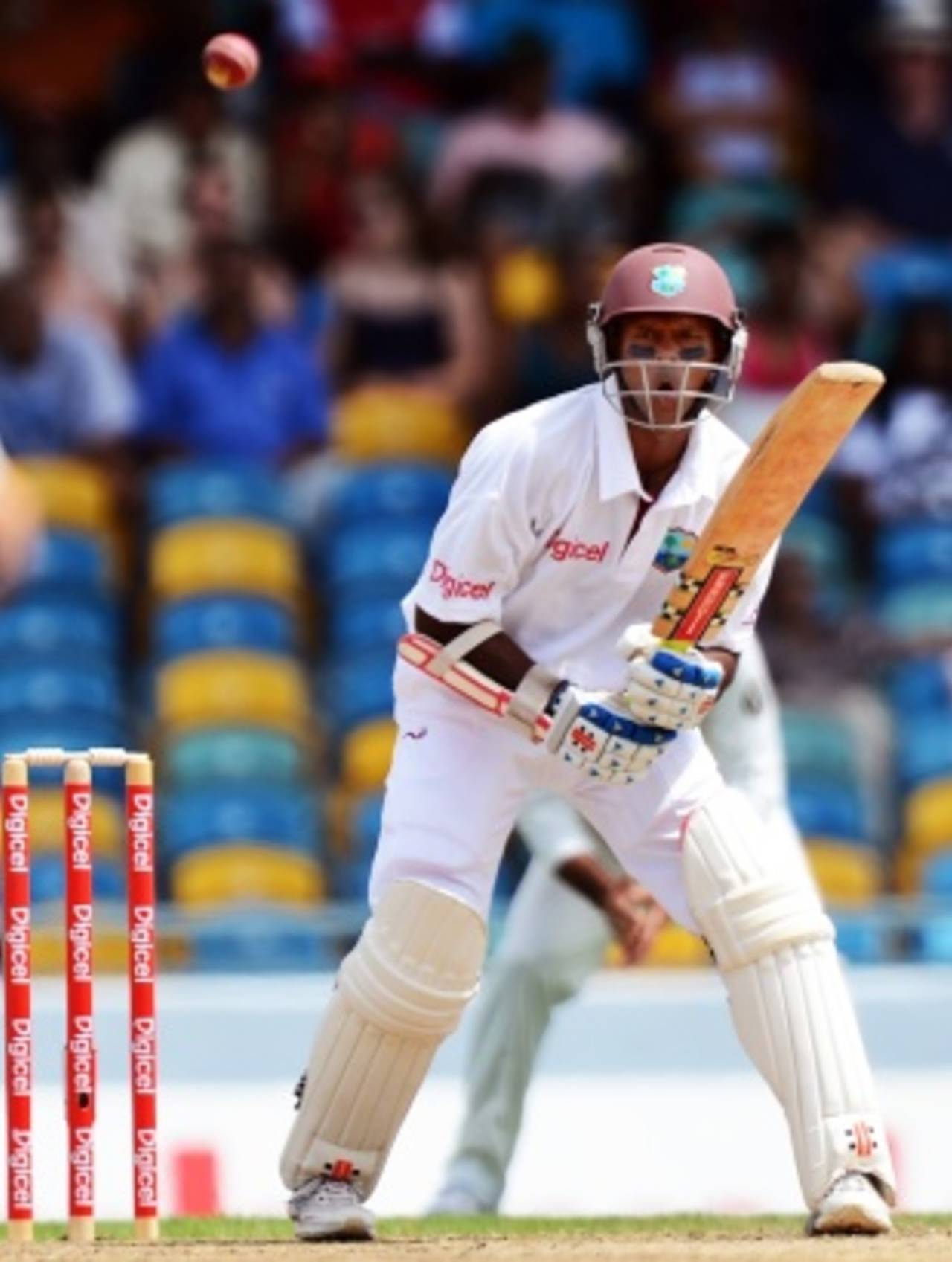Exceptional cricketers come in many different forms. Sometimes that form appears to have more than its fair share of elbows.
At the crease,
Shivnarine Chanderpaul is far from poetry in motion. Nothing rhymes. Nothing fits either - not even his helmet or pads. He looks like he's been constructed by a childlike deity who has put all the joints in the wrong way round. There are hinges in unexpected places and nothing seems to move properly. However, I've had plenty of time to ponder these mechanics over the years; in them lies the genius of the man.
Anyone who's seen a textbook cover drive from Monty Panesar knows there's more to batting than what you look like. If you get the middle of the bat onto the ball, that's the main thing, and no one does this more reliably than Chanderpaul. Who knows, maybe his is the perfect technique after all. Maybe they'll teach people to bat like rickety crabs in years to come.
I doubt it, though. There's a methodology behind Shiv's movements, but like with some homemade Heath Robinson-style contraption, only the designer knows the true purpose of each constituent part. All the rest of us can do is marvel that so many moving components can all come together to create something that actually works at all.
I didn't always love Shiv Chanderpaul. Perhaps it's the kind of love you feel for an old piece of furniture. You don't give it too much thought, but it's always there. You see so much of it you eventually come to wonder whether you could live without it. Look at his record and you'll see he's a man who beds in for entire series, not just for an innings.
During the 2007 Test series in England, he made
at least 50 every time he came to the crease, including two unbeaten hundreds. I saw the first of those,
at Old Trafford. In the fourth innings, on an increasingly devilish pitch, in a bad team, chasing 455 to win, and with Monty Panesar and Steve Harmison offering constant and contrasting threats, he never once gave up. It was frankly superhuman.
His thinking was that if someone else on his side could remain with him, his team couldn't lose. That reasoning featured one plain assumption: that he would not be dismissed. Unsurprisingly, no one else could match him and as he walked off the field at the fall of the final wicket, I remember him looking nothing other than irritated.
It had been a hopeless situation, yet Shiv had not just hoped to succeed, he had expected to do so. The line separating confidence from delusion is a thin one. Shiv had probably been on the wrong side of that line, but he stayed where he was and eventually it moved towards him, even if his team-mates couldn't help justify his position completely.
He rocks from side to side like a dancing cockney chimneysweep as he ambles into position for each delivery, and he jabs his bat in front of him like it's a sooty brush to compound the effect
He bats in the same way. He waits. He waits for the ball. He waits for the right delivery. Wait for long enough and eventually the world will mould itself around you. Perhaps this is how he has managed to persevere with his most forlorn act of patience - the wait for a West Indies team that might profit from his brilliance.
At 37 years of age, time is against him, yet there have been a few signs recently that his waiting hasn't been in vain. Furthermore, the team's progress has been built on Shiv-like qualities. The callow swashbuckling that was a pale imitation of Brian Lara's approach to cricket has been replaced by discipline and patience. West Indies aren't conquering the world, but they're building solid foundations. They're becoming a tougher team, capable of wearing down the opposition.
That's Chanderpaul's method: erosion. Shorter formats have proven he can hit fours and sixes with surprising abandon, but that's not his modus operandi. Watching him do his thing against Australia on TV recently, I was struck by the laudatory words of Dominic Cork - or the tone of those words, at any rate. Cork is an incorrigible optimist. He is a man who plied his trade as a fast bowler even after he'd turned 40, such is his faith in his own abilities. Yet to hear him speak of Chanderpaul was to hear a defeated man; a man who had been asked the question "How do you dismiss Shivnarine Chanderpaul?" many times and who had never come up with a satisfactory answer.
It brought to mind a line from The Sopranos. Tony is talking to his therapist about his mother. He explains that despite his father being so obviously a hard man, it was his mother who was truly dominant: "My dad was tough. He ran his own crew. A guy like that, and my mother wore him down to a little nub. He was a squeaking little gerbil when he died."
Shivnarine Chanderpaul rarely murders one of his enemies, but he can subdue an entire battalion of them. He rocks from side to side like a dancing cockney chimneysweep as he ambles into position for each delivery, and he jabs his bat in front of him like it's a sooty brush to compound the effect. And he middles it.
Then he does it again. And again. And again.
Alex Bowden blogs at King Cricket
